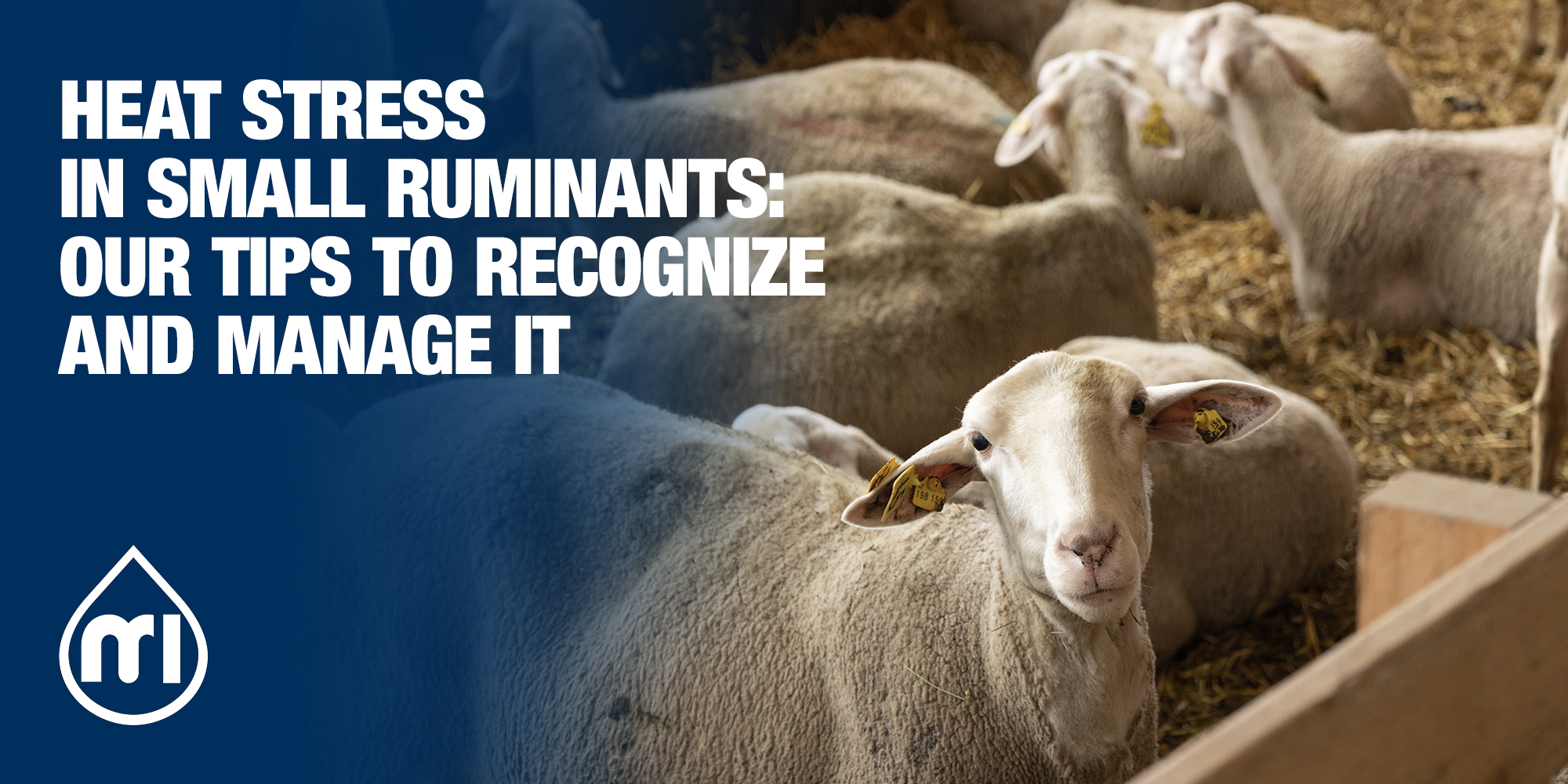
Heat stress in small ruminants: Our tips to recognize and manage it
What you need to know about how to recognize, manage, and prevent heat stress in small ruminants.
We have already talked about how extremely hot temperatures along with consistent humidity typical of summer months can affect health, milk production, and reproduction in dairy cattle.
The combination of temperature and humidity is called heat index, and it is the most accurate indicator of heat stress. This does not affect only cattle, in fact, small ruminants can also experience negative consequences.
Despite being able to tolerate a higher heat index, preventing, tackling, and managing heat stress is key to preserving sheep and goats’ well-being without jeopardizing their growth and behaviour.
So, if you spotted some unexpected and unclear changes in your small ruminants’ health, milk production, or eating patterns, reading this article might help you understand if the root cause was heat stress.
Moreover, with the help of our Regional Sales Managers Nicolo Dessì and Abdelrahman El Ashkar, we’ll provide you with insight into how to identify it, treat it, what factors to keep under control, and some tactics to prevent it, to minimize the impact on your farm’s efficiency.
Signals you should beware of
Some red flags of heat stress are aligned with those of cows:
- Lower eating, higher drinking. High external temperatures cause an increase in small ruminants’ body temperature, that further rises when sheep and goats eat. For this reason, they will reduce their dry matter intake, rumination, and grazing time, while requiring approximately 30-50% more water.
- Decrease in milk production. A dramatic decrease in milk yield during the hottest months of the year might be a consequence of the previous point, identifying an incorrect heat stress management.
- Lack of energy. One more consequence of reducing the feed intake is a decrease in energy availability, which results in weary animals, especially during the hottest hours of the day.
- When the heat is unbearable, small ruminants have difficulties with breathing, too, and their respiratory rate increases.
- Higher infection rate, lower milk quality. Not only does heat stress weaken sheep and goats’ immunity system, making them more vulnerable to bacteria attacks and infections, such as pneumonia, but warm environments and high solar radiation facilitate the spread of pathogens, increasing Somatic Cell Count and mastitis.
Other signals, instead, are more specific for each breed:
- Sheep putting their head under other sheep’s udders. Animals will appear restless, constantly searching for shaded, fresher areas to decrease their temperature. On this note, since that zone is often in direct contact with the ground, it is likely to be cooler.
- Goats staggering. These animals have a sensor in their head that feels the heat and, when this is exceeded, it affects their balance and their walking behaviour.
How to manage heat stress
If your animals are overheated, make sure to give them immediate attention. This will enable you to promptly support them, minimizing the negative aftermath.
On the one hand, some good actions to be taken are moving sheep and goats to a shaded, well-aerated area, providing them with fresh, clean water, and rubbing cool water or alcohol on the bare area between the rear legs can be helpful actions to relieve them, as this area has a lot of vascular activity.
As far as feeding, nutrient-dense foods such as grain should be preferred, as they require less body heat to be digested, compared to forages.
On the other hand, make sure not to use excessively cold water, as this might cause a temperature shock for the animals. Another pointless action is pouring water on the sheep’s back, as the wool prevents the liquid from reaching the skin.
To avoid further stress, it is also advisable to minimize animal work or transport during peak heat times.
The insight shared so far can be helpful in managing hyperthermia already underway, to minimize its negative effects on the small ruminants’ welfare.
However, there’s still a lot to be told about how to prevent heat stress and what factors have to be monitored to avoid jeopardizing your farm's efficiency. Don’t miss them in our next Blog post!
Sources:
- Code of Practice for the Care and Handling of Sheep – National Farm Animal Care Council, 2021
- Heat stress in sheep and goats Schoenian – Maryland Small Ruminant Page, 02/18
- Heat Stress in Small Ruminants Froehlich – South Dakota State University Extension, 05/23
- Resilience of Small Ruminants to Climate Change and Increased Environmental Temperature: A Review Joy, Dunshea, Leury, Clarke, DiGiacomo, Chauhan – MDPI, 05/20
- Shielding grazing dairy cows from heat stress: effective strategies for farm management and cow welfare Malacco – Michigan State University Extension Dairy, 06/23
